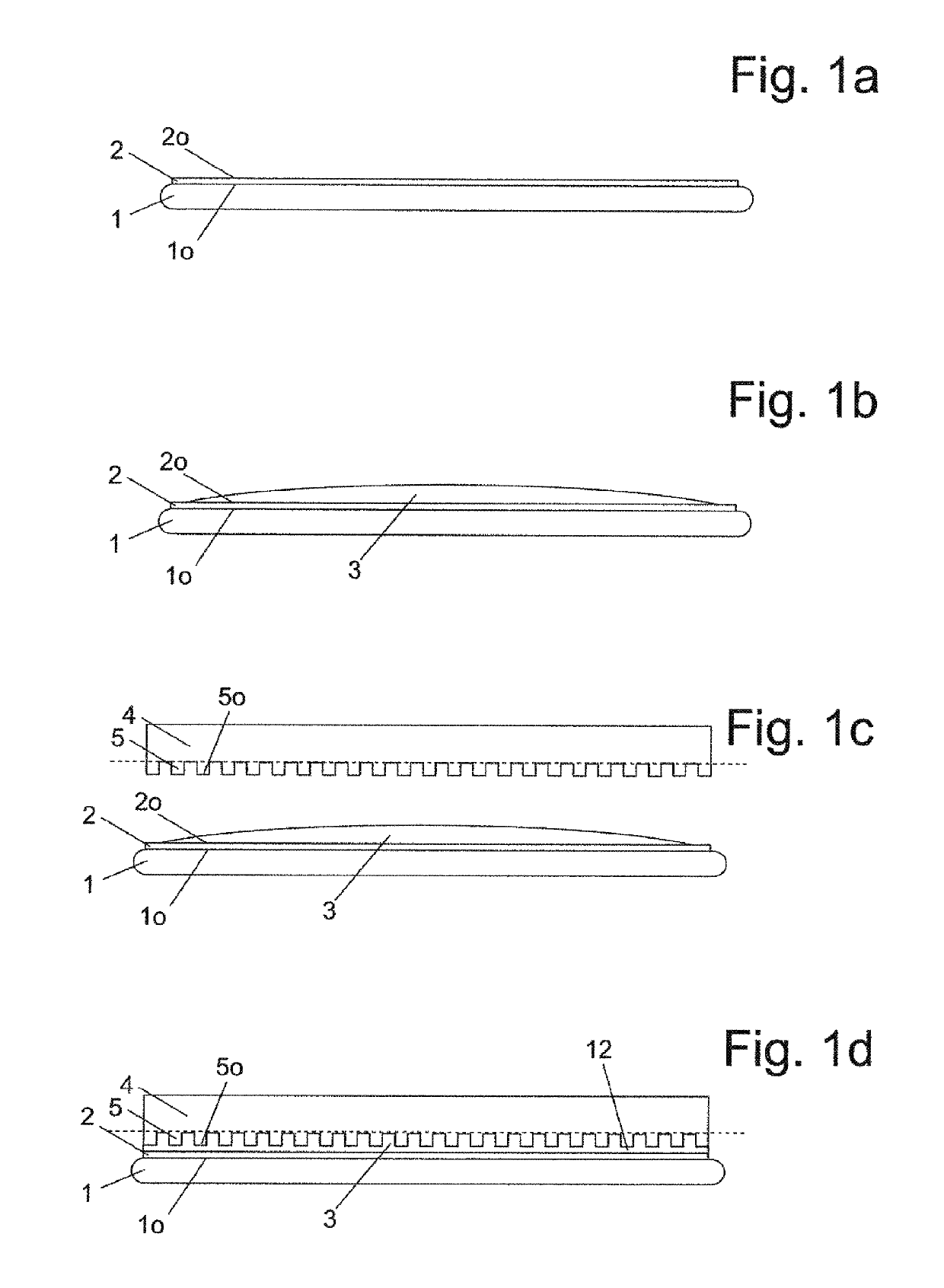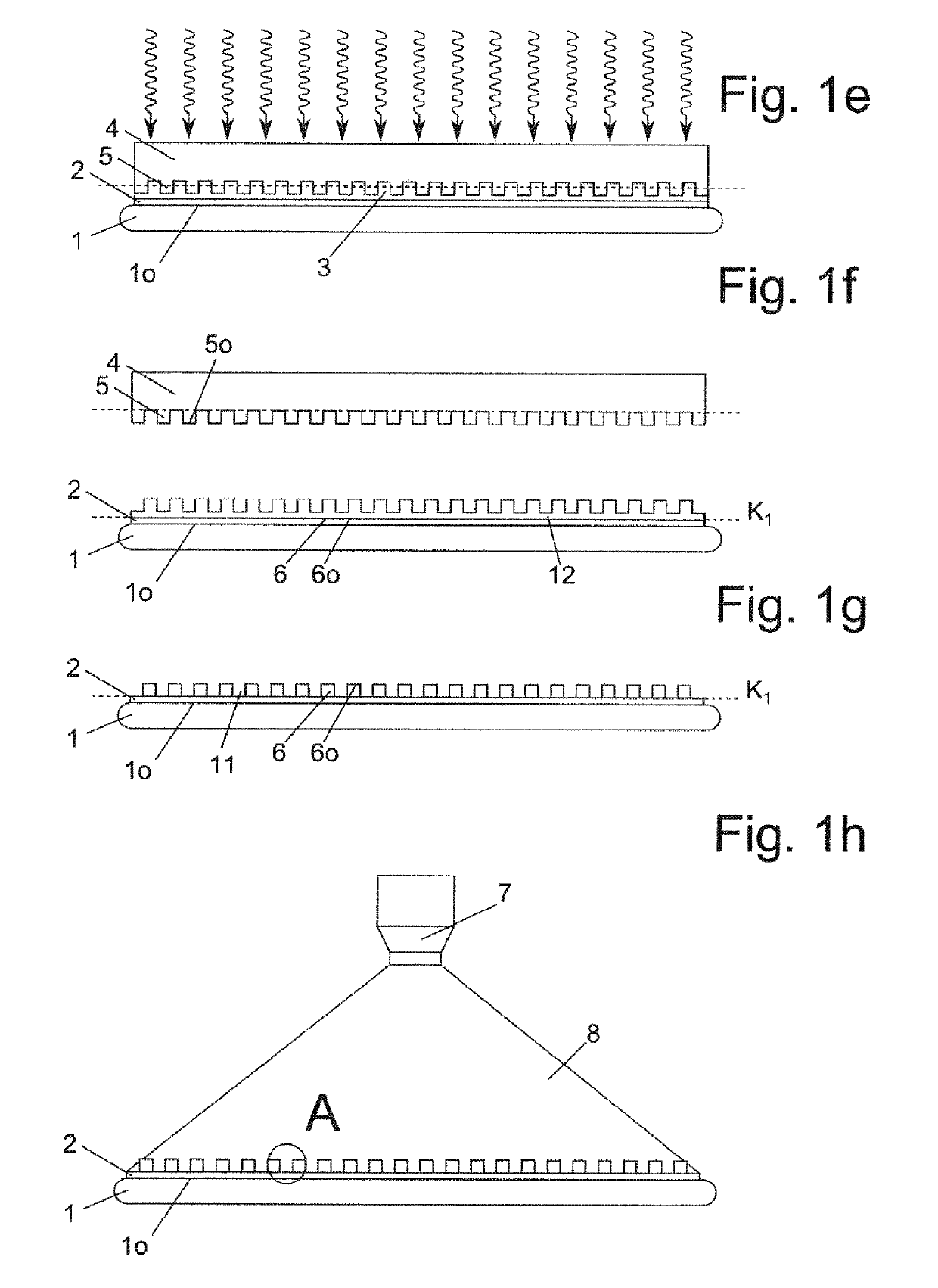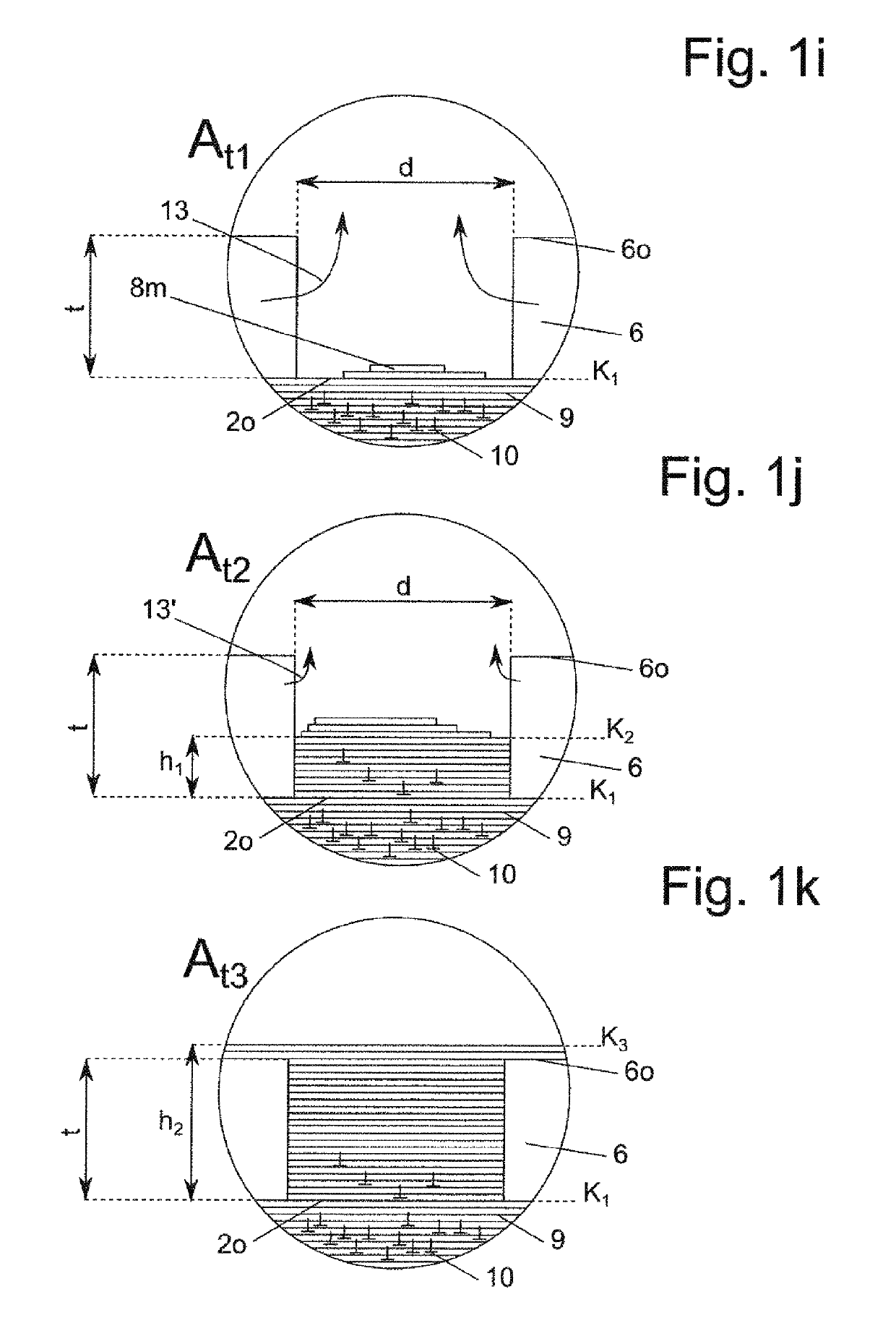Method for application of an overgrowth layer on a germ layer
- Summary
- Abstract
- Description
- Claims
- Application Information
AI Technical Summary
Benefits of technology
Problems solved by technology
Method used
Image
Examples
Embodiment Construction
[0214]In the figures, the same components or components with the same function are labelled with the same reference numbers.
[0215]All of the figures shown exclusively constitute schematic illustrations, which are not true to scale, of conceivable process steps according to the invention. In particular, the order of magnitude of the structures of a mask 6 for masking a seed layer 2 lie in the micro- and / or nanometre range. An overgrowth layer 14 is applied onto the mask 6 and the seed layer 2.
[0216]FIG. 1a shows a cross-sectional illustration of a substrate 1 with a substrate surface 1o, on which the seed layer 2 is or has been deposited in a first process step with a seed layer surface 2o. According to an alternative embodiment, the substrate 1 itself can be the seed layer 2. The seed layer 2 is preferably monocrystalline, more preferably monocrystalline and epitaxial. It is possible in particular to influence the crystal orientation of the seed layer 2 by means of the deposition me...
PUM
 Login to View More
Login to View More Abstract
Description
Claims
Application Information
 Login to View More
Login to View More - R&D
- Intellectual Property
- Life Sciences
- Materials
- Tech Scout
- Unparalleled Data Quality
- Higher Quality Content
- 60% Fewer Hallucinations
Browse by: Latest US Patents, China's latest patents, Technical Efficacy Thesaurus, Application Domain, Technology Topic, Popular Technical Reports.
© 2025 PatSnap. All rights reserved.Legal|Privacy policy|Modern Slavery Act Transparency Statement|Sitemap|About US| Contact US: help@patsnap.com



